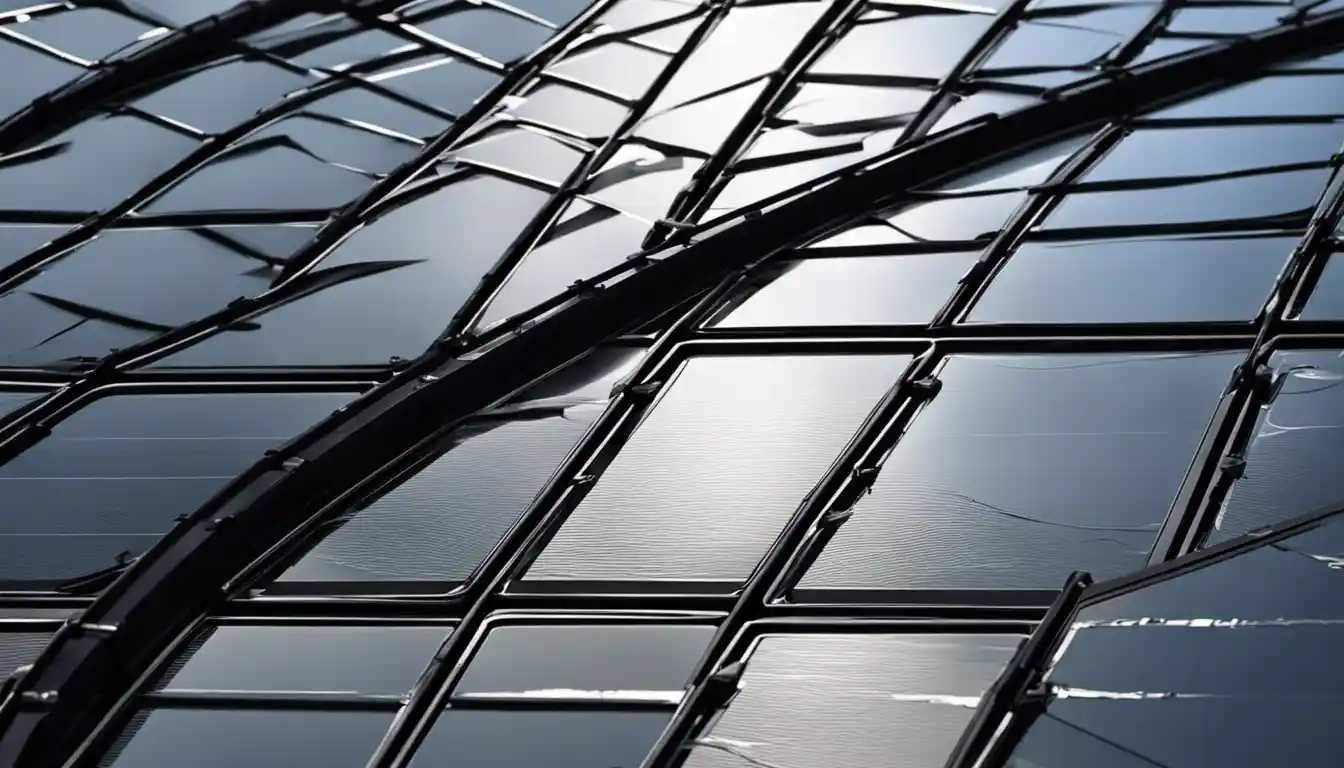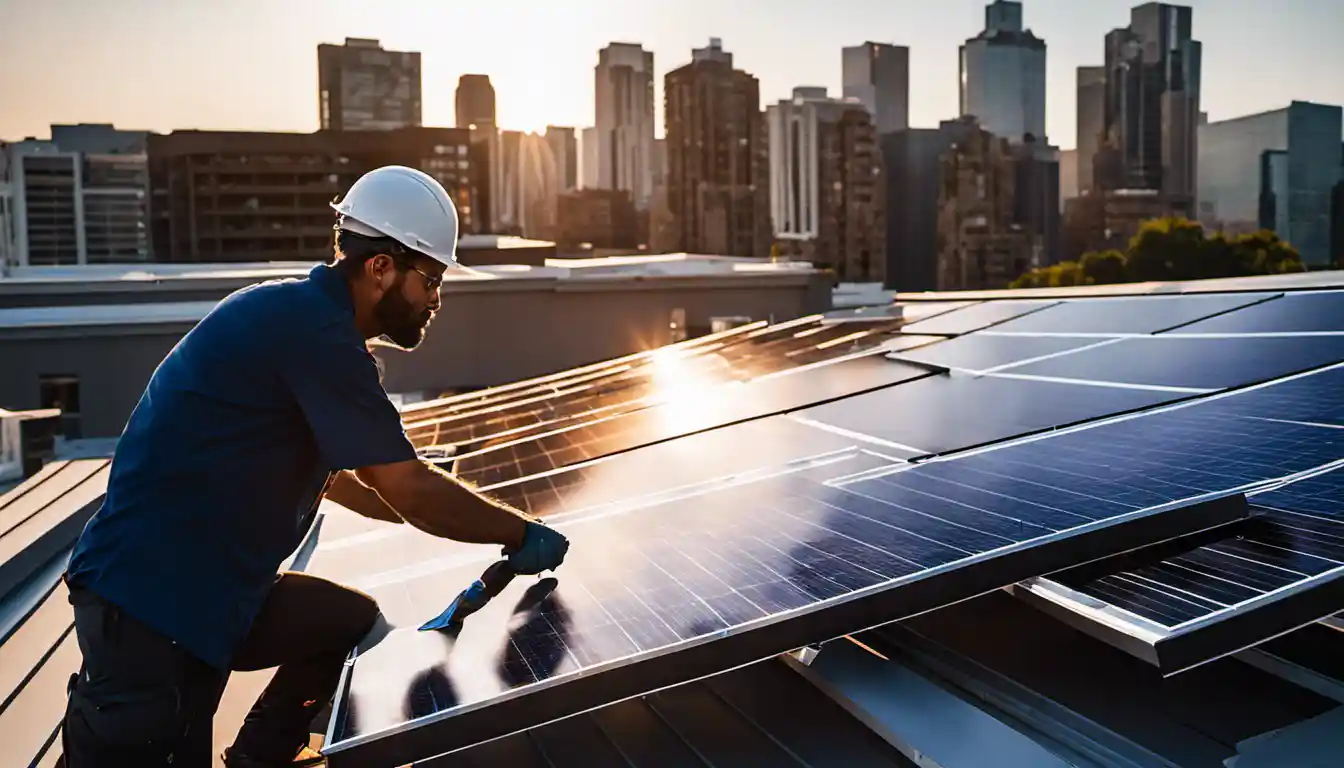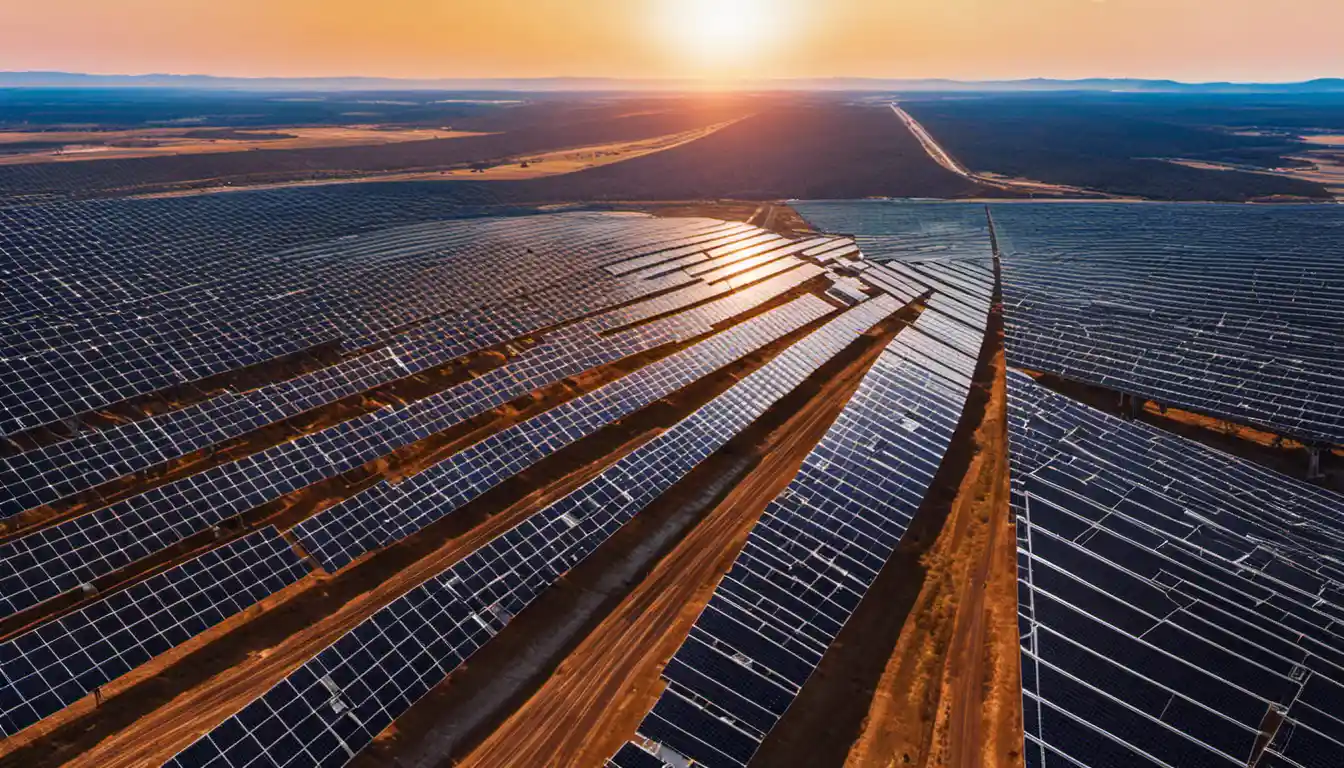What are Half-Cut Solar Panels?
A half-cut solar panel is a type of solar panel that’s made by cutting standard solar cells in half. This process improves the panel’s performance and durability because it lowers the electrical current and reduces resistive losses, thus increasing the panel’s efficiency.
Understanding How Half-Cut Solar Panels Work
For you to truly understand ‘what is a half cut solar panel’, it’s crucial to delve into how these panels work. Just as the name might suggest, half-cut cells are traditional photovoltaic solar cells that have been bisected, or ‘half-cut’, diagonally. Once halved, these cells are arranged into modules, effectively reducing the operational current by half and lowering resistive losses. This act of slicing also reduces the ‘busbar shadow’, a tiny shadow that can reduce solar collection. This shadow may not have a massive impact, but in the world of solar energy, every kilowatt counts.
The Distinction: Half-Cut Solar Panel Vs. Full Cell
When we contrast half-cut solar panels vs. full cells, and especially in terms of covering the question, ‘what is a half cut solar panel’, one area that sticks out is in their current handling. Half-cut solar panels carry half the amount of electric current that a full cell does. This results in significant advantages, such as less heat being lost, a decrease in resistive losses, and an increase in overall power output.
Delving Deeper: What Is a Mono PERC Half Cut Solar Panel?

You might also come across the term ‘Mono PERC Half-Cut Solar Panel.’ PERC stands for Passivated Emitter Rear Cell. It refers to a type of solar cell that has an additional layer at the back which is designed to capture unabsorbed light. A Mono PERC half-cut panel, therefore, is a monocrystalline solar panel that uses the PERC technology and features half-cut cells. This combination results in a solar panel that performs significantly better, especially in low light and high heat circumstances.
Advantages of Half-Cut Solar Panels
There are numerous half cut solar panel benefits. Since each cell in a half-cut solar panel operates independently, the panel becomes less affected by shading or dirt coverage. This is a crucial benefit considering that traditional full-cell panels suffer a sharp drop in power output when even a small portion is shaded. Additionally, half-cut solar panels are more efficient due to the reduction in resistive loss. Last but not least, their improved performance leads to better yield and savings for you in the long run.
Half-Cut Solar Panels and Improved Panel Performance
Improved panel performance is one of the most significant half cut solar panel benefits. Consider this: if you have a garden, you would not want a shadow cast on it while you are growing plants, right? The same principle applies with solar panels – the less shadow, the better the performance. And half-cut solar panels provide just that: less shadow and more light absorption. This leads to an enhanced panel performance that keeps your home powered effectively and efficiently.
Spotlight on the Potential Disadvantages of Half-Cut Solar Panels

While half-cut solar panels do offer a range of advantages, it’s necessary to shed some light on their potential downsides, too. Firstly, these panels can be slightly more expensive than their full-cell counterparts due to increased manufacturing complexity. Besides, they demand specialized installation, maintenance, and troubleshooting techniques.
However, do bear in mind that these potential disadvantages don’t negate the significant benefits that half-cut solar panels offer, especially over the long term.
Solar Panel Manufacturers Utilizing Half-Cut Cell Technology
Several solar panel manufacturers have taken note of the benefits of these half-cut cells and have begun incorporating them into their products. Companies such as Jinko Solar, JA Solar, and Solaria are leading industry examples.
Are Half-Cut Solar Panels Worth the Investment? An Analysis
By now, you might be wondering, “Are half-cut solar panels really worth the investment?” The simple answer is: Yes, they are arguably worth the investment. When it comes to solar panels, increased efficiency typically equates to a greater return on investment. Despite the potential higher upfront cost, the long-term benefits such as improved power output, efficiency, durability, and shade tolerance often outweigh the initial expense.
How Half-Cut Solar Cells Promote Reduced Resistive Losses

One of the significant half-cut solar panel benefits is the reduction in resistive losses. Resistive losses refer to the decrease in efficiency that happens when electricity has to travel a long distance within a solar cell. Since the cells in half-cut panels are smaller, the electricity has a shorter distance to travel, leading to less power loss.
The Aspect of Higher Shade Tolerance in Half-Cut Solar Panels
Higher shade tolerance is another key benefit of half-cut solar panels. If a shadow is cast on a traditional solar panel, the output can drastically reduce because each row of a solar cell string is rendered inoperative. In contrast, half-cut solar panels can still operate at a significant percentage of their capacity, even with partial shading.
The Future of Solar: Are Half-Cut Panels the Next Big Thing?
Given the numerous advantages they offer, it’s no wonder that many believe that half-cut solar panel technology is the future of solar energy. These panels offer more efficient energy production and resistive loss reduction, promising an efficient, sustainable future.
Major Takeaways from the Advancements in Half-Cut Solar Cell Technology
It’s evident that half-cut solar panel technology is a significant advancement in the solar world. It proves once again that the solar industry is ever-evolving, with new technologies continually emerging to boost efficiency and power output.
The exceptional benefits these panels provide, such as higher shade tolerance and reduced resistive losses, have set a high standard for solar technology’s future. For more insights into these and other vital solar technologies, take a look at our comprehensive guide on types of solar panels.
Remember, the ultimate goal here is to harvest the sun’s energy more efficiently. And although the journey towards perfect energy sustainability is certainly a marathon, not a sprint, advancements like these half-cut solar panels indicate that we are headed in the right direction. So, let’s stay the course and continue pushing the boundaries!



